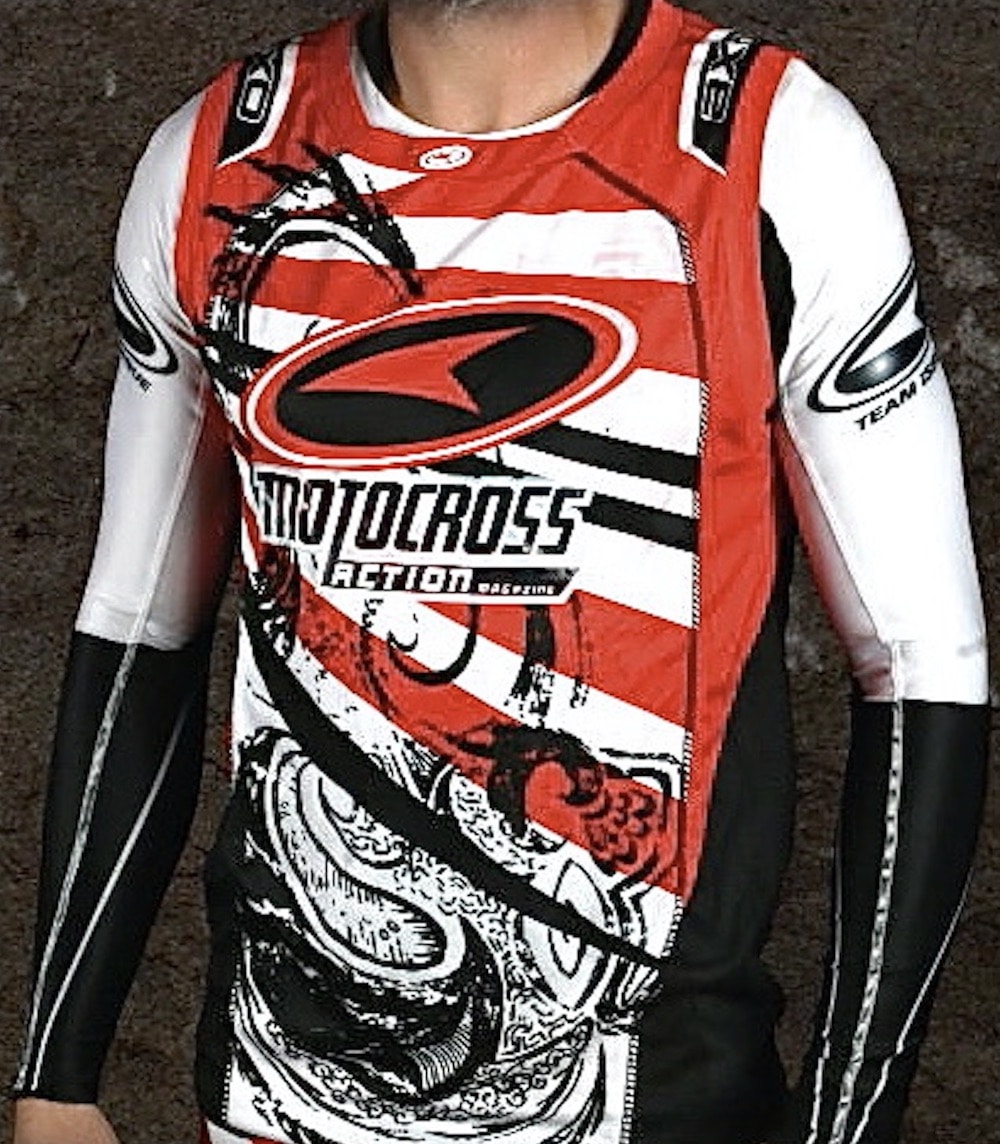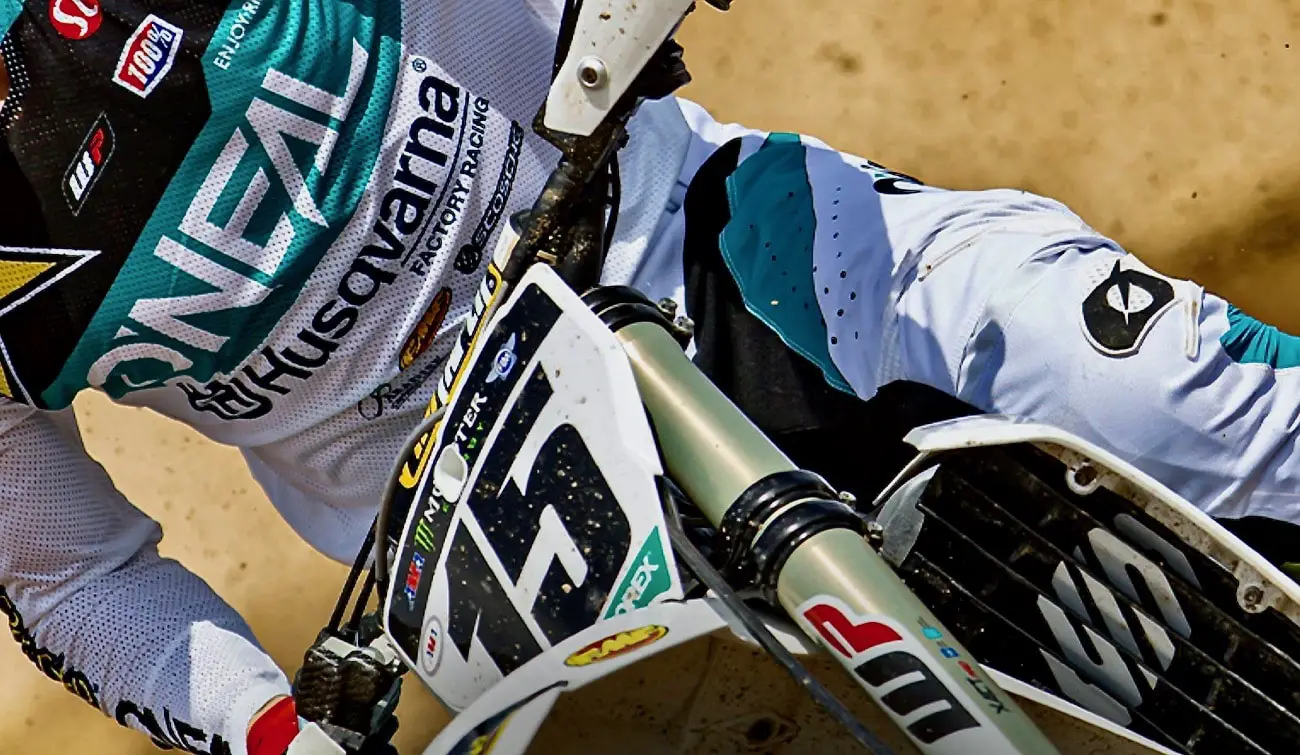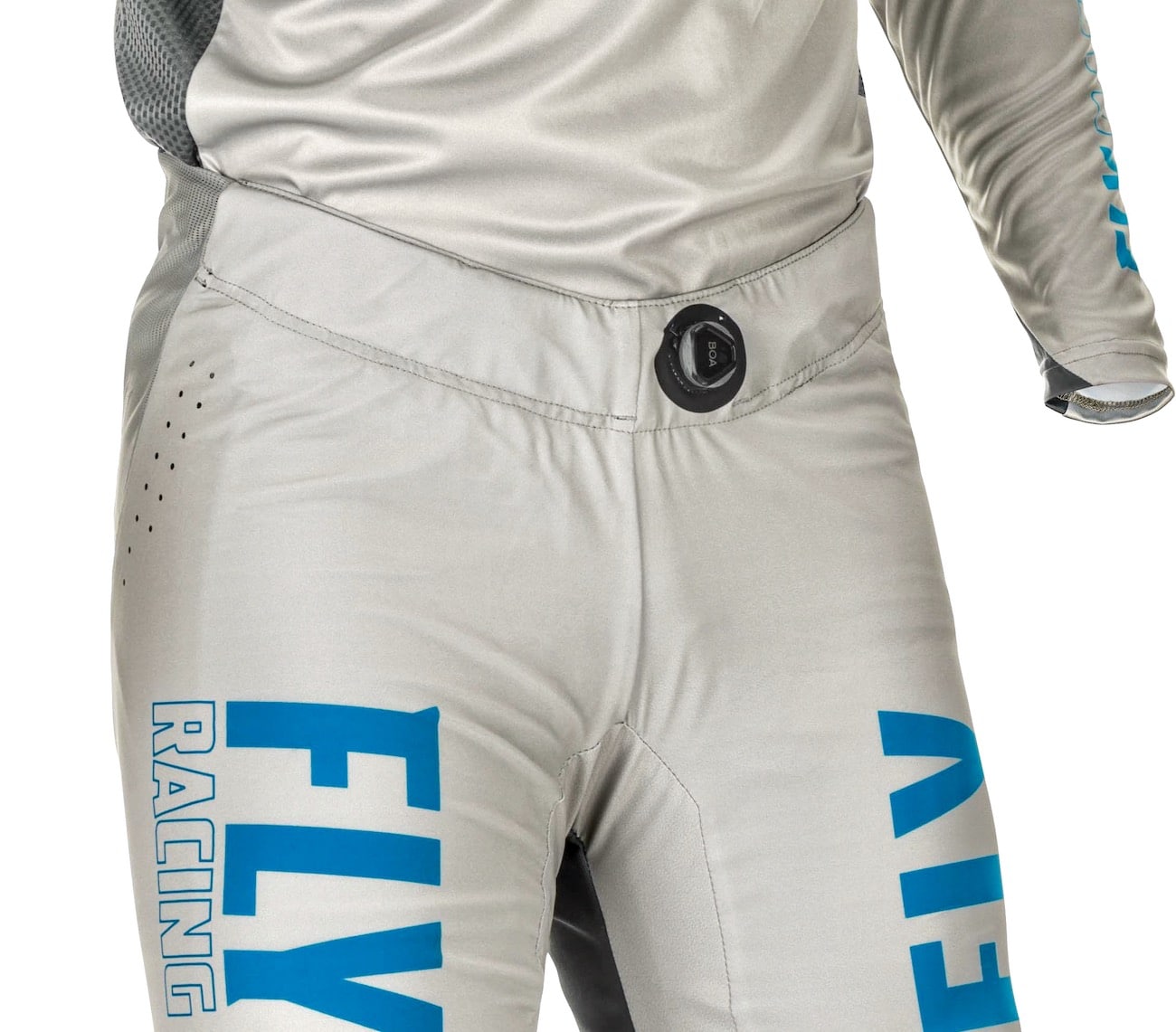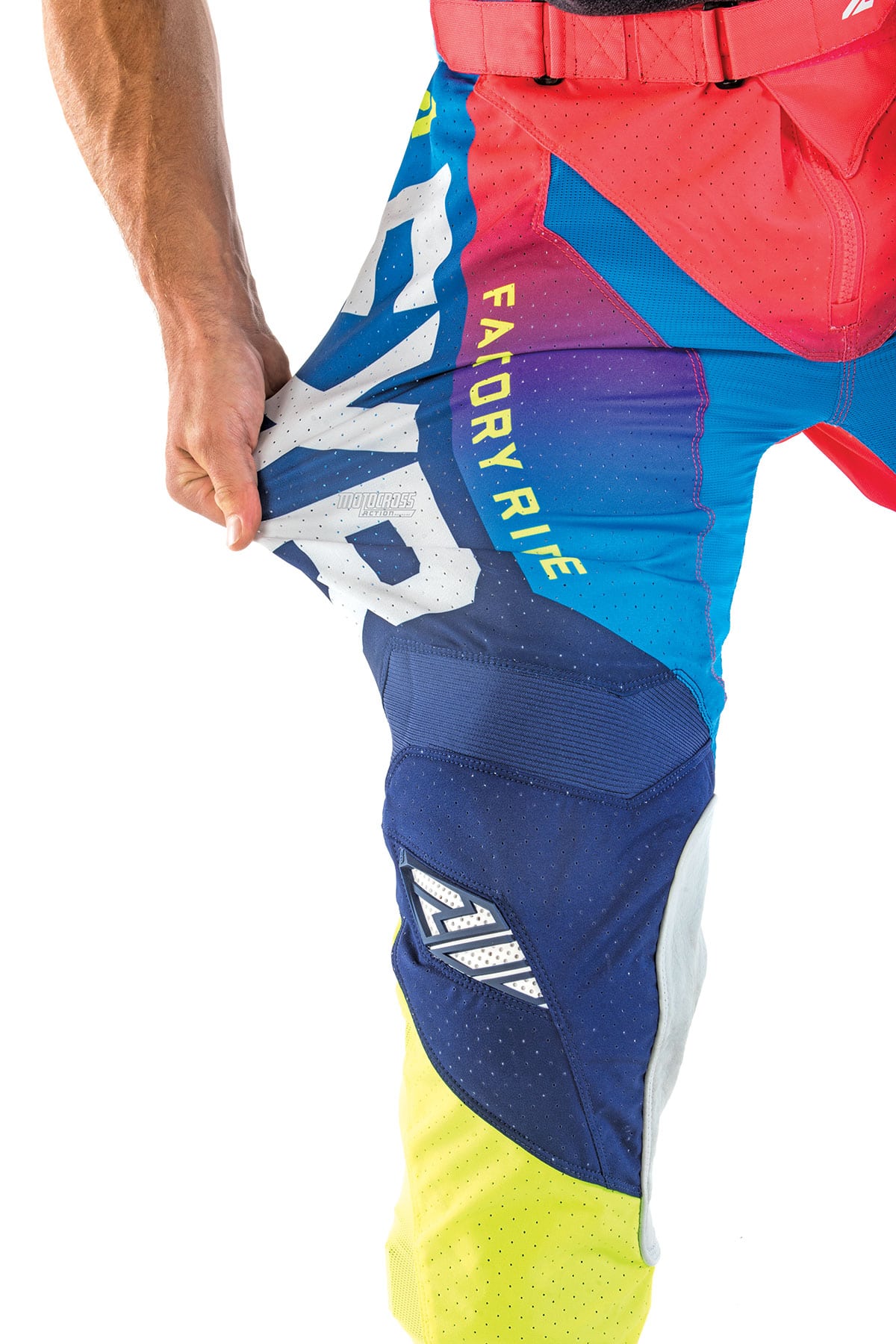TEN THINGS ABOUT MODERN MOTOCROSS GEAR
TEN THINGS ABOUT MODERN MOTOCROSS GEAR
(1) Competition. Capitalism is at work in our industry, as motocross apparel brands are competing to earn your dollar by providing the right gear at the right price. Too many people focus on the brand name, trying to stay with the cool companies. That is a byproduct of good marketing campaigns, but the best motocross gear for you is the type that you don’t notice on the track. The last thing you want to be focusing on while riding is your gear. If it’s too tight, too loose, too hot, too restrictive or just plain too distracting, then it’s not good.
(2) History. Back in the day, riders had a single pair of leather pants and a plain cotton jersey to ride in until they wore out. The leather pants were required by AMA rules, and until 1976 you couldn’t wear nylon pants. Since then, motocross gear evolved into light, cool, colorful and better-fitting apparel. In the last three years, the latest fashion trends are taking us back to the slim style of the retro leather pants.
(3) Customization. Pro riders get extra-special treatment from their gear companies. They are the high-profile salesmen of the product, thus the gear that the top guys wear is often tailored to fit them like a tuxedo. It is not unusual for clothing sponsors to shorten the sleeves of their production jersey to fit the arm length of their star rider or make custom boots when a rider complains about the fit, weight or look of his boots. You may think this is silly, but the input of the star riders carries a lot of weight with respect to how the production gear will fit down the line.
 Way back in 2009 AXO invented the first athletic-fit gear with its Team Issue Compression gear. It didn’t catch on. Then, in 2013, James Stewart borrowed AXO’s idea for his gear and it started a trend in tight-fitting motocross gear.
Way back in 2009 AXO invented the first athletic-fit gear with its Team Issue Compression gear. It didn’t catch on. Then, in 2013, James Stewart borrowed AXO’s idea for his gear and it started a trend in tight-fitting motocross gear.
(4) Athletic fit. AXO invented athletic fit gear, but the consumers resisted the idea until James Stewart brought tight-fitting gear into style in 2013 when he showed up at Anaheim 1 with skintight jersey sleeves on his Seven MX gear. Since then, high-end motocross gear has become more and more form fitting. If the skintight riding apparel trend continues, the slightly pudgy Vet riders who buy the gear will look like stuffed sausages. MXA used to make fun of the tight jerseys, but modern stretchy fabrics have made them comfortable.
(5) Comfortable fit. Loose-fitting gear is typically described as having a “comfortable fit,” and if you’re not a buff athlete, you may appreciate the extra material that it provides. Extra material also means less friction between your knee braces, your pants and the motorcycle. And, durability increases as well.
(6) Flexibility. The number-one factor to look for in gear performance is flexibility. If the pants catch on your knee braces, don’t allow you to get your leg high enough in a berm, pull down in the back when you slide your bike’s seat or have a zipper or waistband that is too tight, you won’t perform at your best. To avoid buying gear that is too restrictive, make every effort to try new gear on before you buy it. You can do this at your local dealer or by asking friends at the track if you can try on their new gear before you buy.
 Dean Wilson’s O’Neal gear features modern lightweight fabric, vented airflow jersey and laser-cut perforations in the pants to maximize breathability.
Dean Wilson’s O’Neal gear features modern lightweight fabric, vented airflow jersey and laser-cut perforations in the pants to maximize breathability.
(7) Breathability. Most riders want to have their cake and eat it too. Not only do we want gear that is rugged, slim and makes us look like Ken Roczen, we also want it to be breathable so that we don’t overheat. Modern gear designers have options when it comes to hot-weather gear. There are laser-cut holes, lighter nylon fabrics and mesh panels for added airflow.
(8) Durability. Modern gear is expensive, so longevity should always be factored in when making a purchase. MXA test riders emphasize durability when testing gear. The term “athletic fit” is often a synonym for fragile and weak. With the increased popularity of form-fitting gear over the last couple years, however, durability is increasing, thanks to material improvements.
 In search of more adjustability, Fly Racing added Boa adjusters to the back of the pants to cinch them up, now they have introduced a zipperless pants that has the Boa reel in the front.
In search of more adjustability, Fly Racing added Boa adjusters to the back of the pants to cinch them up, now they have introduced a zipperless pants that has the Boa reel in the front.
(9) Adjustability. To maintain a secure fit, the pants have to stay on. O’Neal Racing uses a super-secure Velcro belt that goes all the way around the waistband on its high-end gear for almost unlimited adjustability. Some brands use Velcro sans-a-belt adjustment straps on the sides of the waistband to take up slack. There are also brands that rely solely on the proper fit with an elastic waistband to provide snugness. The new Fly Racing Lite pant comes without a zipper for 2021 and only has the Boa system reel to snug up the waistline.
(10) Gloves. As jerseys and pants have evolved to become lighter and less restrictive, so have gloves. Modern motocross gloves do not focus on protective knuckle padding like the gloves of the 1980s. Modern gloves have a minimalistic style, thin material and short cuffs. The palm area is where they focus most of the engineering. Riders want the palm of the glove to be thin, supple and wrinkle-free. Gloves with padded palms have fallen out of favor.






Comments are closed.